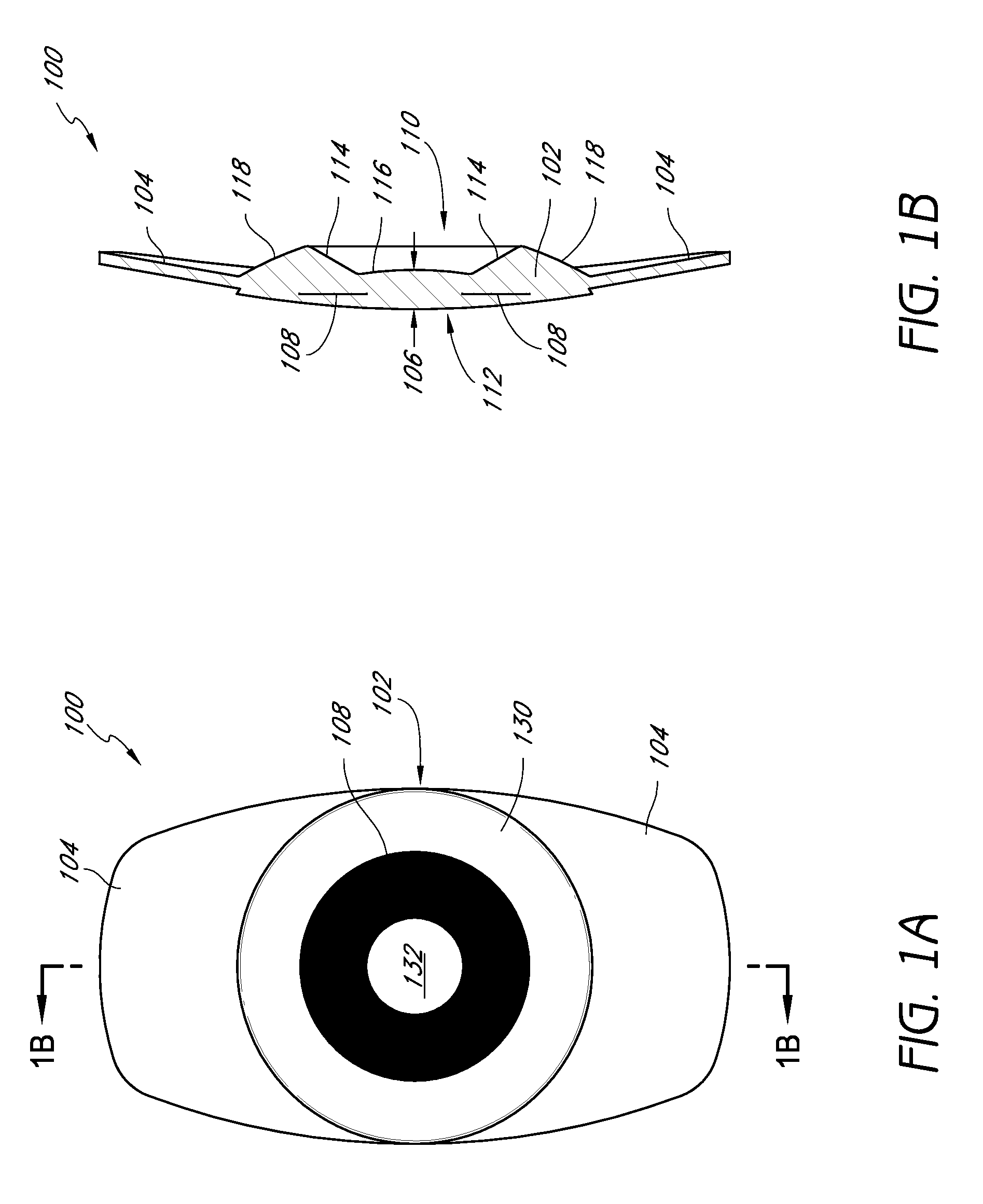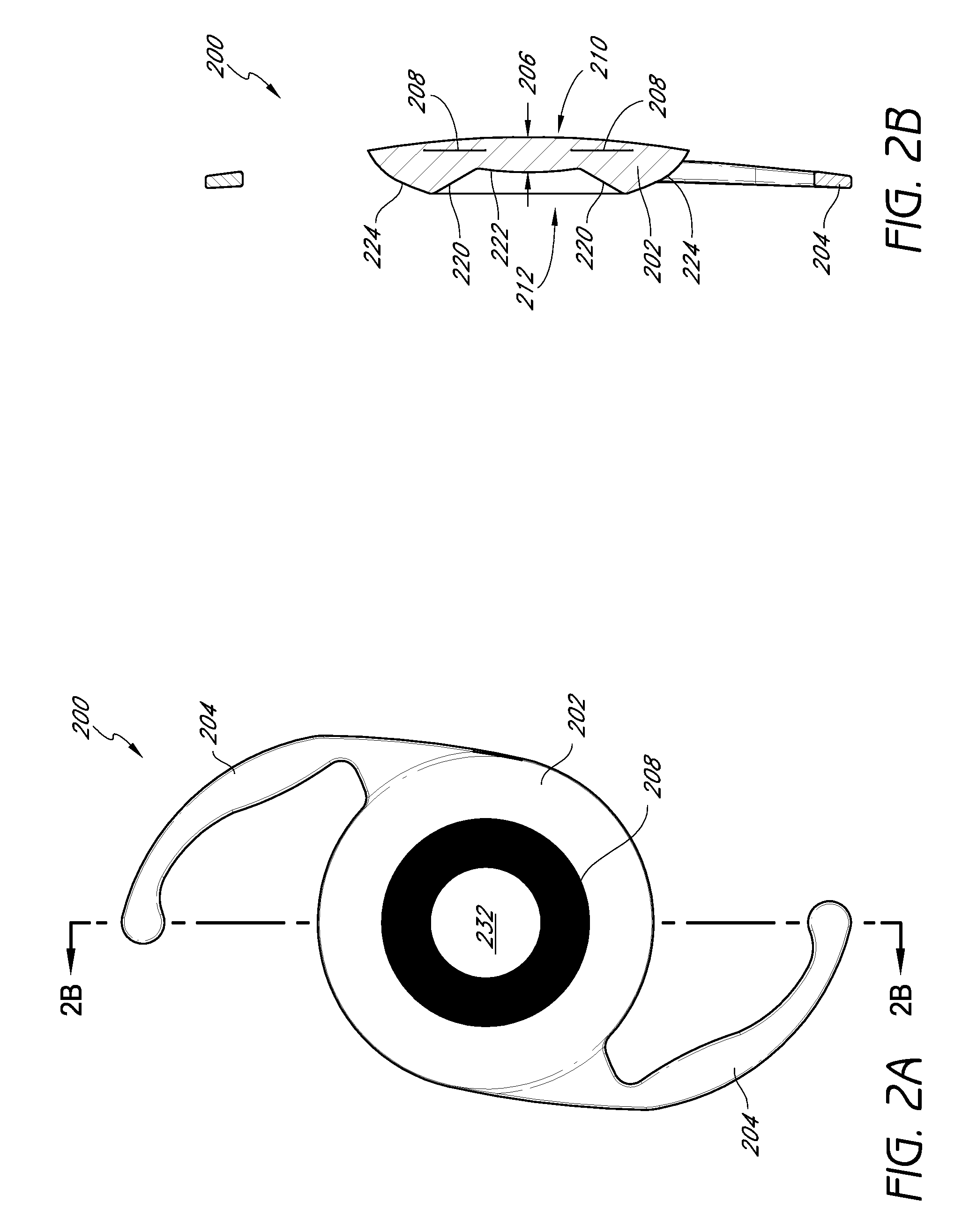Masked intraocular implants and lenses
a technology applied in the field of intraocular implants and lenses, can solve the problem that the ocular lens cannot be adapted to focus, and achieve the effect of reducing the tendency of the hole to produce visible diffraction
- Summary
- Abstract
- Description
- Claims
- Application Information
AI Technical Summary
Benefits of technology
Problems solved by technology
Method used
Image
Examples
Embodiment Construction
[0147]This application is directed to intraocular implants and methods of implanting intraocular implants. The natural lens of an eye is often replaced with an intraocular lens when the natural lens has been clouded over by a cataract. An intraocular lens may also be implanted into the eye to correct other refractive defects without removing the natural lens. The intraocular implants of the preferred embodiments include a mask adapted to provide a small aperture for light to pass through to the retina to increase depth of focus, sometimes referred to herein as pinhole imaging or pinhole vision correction. The intraocular implants may be implanted in the anterior chamber or the posterior chamber of the eye. In the posterior chamber, the implants may be fixated in the ciliary sulcus, in the capsular bag, or anywhere an intraocular implant is fixated. In some embodiments discussed below, the intraocular lenses have a reduced thickness in a central region compared to conventional intrao...
PUM
 Login to View More
Login to View More Abstract
Description
Claims
Application Information
 Login to View More
Login to View More - R&D
- Intellectual Property
- Life Sciences
- Materials
- Tech Scout
- Unparalleled Data Quality
- Higher Quality Content
- 60% Fewer Hallucinations
Browse by: Latest US Patents, China's latest patents, Technical Efficacy Thesaurus, Application Domain, Technology Topic, Popular Technical Reports.
© 2025 PatSnap. All rights reserved.Legal|Privacy policy|Modern Slavery Act Transparency Statement|Sitemap|About US| Contact US: help@patsnap.com



